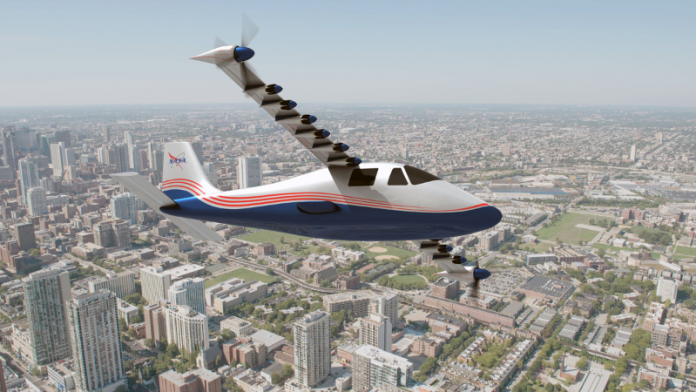The United States space agency – NASA – is preparing to launch its fully electric plane, in a test flight, which represents the first steps of “electricity in the sky”, after their successful lineup of electric experiments across the world.
NASA is preparing for the first flight of its fully electric X-57 Maxwell – an experimental aircraft – by July 2022. It is understood that the flight replaces aviation-grade fuel for lithium-ion cells; the same compound of batteries found in laptops and smartphones.
In contrast, Tesla – the leading producer of electric cars globally – opts between either Nickel Cobalt Aluminium or Lithium Iron Phosphate for its range of cars.
The X-57 project was launched in 2016 with the aim of exploring all-electric propulsion, with the hope of developing more efficient and environmentally-friendly aircraft. The electric aircraft will feature 14 propeller-driven electric motors mounted on top of the wing’s leading edges.
Electric motors placed higher up on the wing will also increase airflow over the aerofoil at lower speeds, thereby increasing its lift. This increased lift will further allow the aircraft to operate on shorter runways.
Aviation accounts for about 2 per cent of global carbon dioxide (CO2) emissions, according to the International Civil Aviation Organization, and NASA notes that, unlike motor fuels, jet fuel still contains lead; albeit at low levels, which is a major cause of environmental pollution.
NASA reportedly uses new technologies in the plane, not to make it fly higher or faster, but to make it fly relatively quietly and efficiently. Jet propulsion, while faster and widely used in the industry, is still inefficient due to the heat and gas generated that cannot be contained to be converted into other sources of power.
NASA has reconfigured the X-57’s wings to be just 42 per cent the size of similar-sized aircraft, a design the space agency said reduces drag to make the flight more efficient.
If the aircraft can demonstrate all-electric flight capability over the California desert near NASA’s Armstrong Flight Research Center, it could pave the way for electronic aircraft that is 40 per cent more efficient than those flying today.
However, it must be seen how the aircraft negates ground-vibration-induced wing flutter caused by the electric motors.






